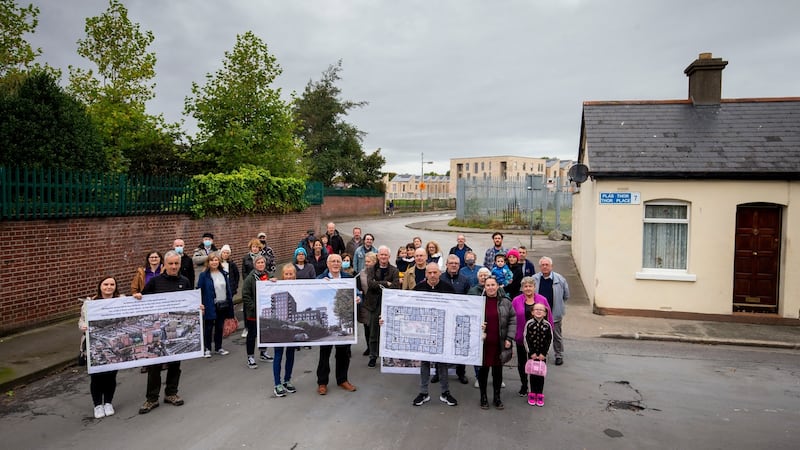A €400 million redevelopment of the O’Devaney Gardens in Dublin 7 to include more than 1,000 apartments and one 14-storey and two 12-storey tower blocks has been condemned as “monstrous” by local residents, who have vowed to seek a judicial review to stop the project.
The scheme proposed by developer Richard Barrett’s Bartra is made up of 10 apartment blocks with 1,047 units on the site near Stoneybatter and the Phoenix Park.
The project, given the green light by An Bord Pleanála last month, is around 40 per cent larger than the original schemes backed by Dublin City Council in 2019 and is significantly different to the low-rise project initially envisioned.

Under the proposals there will be 30 per cent social housing, 20 per cent affordable housing with the remaining 50 per cent to be sold on the private market. A condition of the planning permission means that the units are restricted to individual purchasers or those qualifying for cost rental or social housing.
Around 100 local residents gathered on Saturday for a meeting in a small park, which will be in the shadow of the development if it goes ahead, to hear from legal and housing experts, locals and public representatives.
Brian O’Connor, chairman of the Stoneybatter-O’Devaney Action Group, told the meeting that the community was “not against development”.
“We all want to see the O’Devaney Garden site developed, it has been a particularly unlucky site to have remained undeveloped for so long. It’s such a vibrant part of the city and with such potential, we can do much better than the proposal that is imminent,” he said.
Earmarked
The site has been earmarked for redevelopment for close to two decades. However, the previous plans collapsed, most notably when developer Bernard McNamara pulled out of a public private partnership scheme as the economy tanked in 2008.
Mr O’Connor said the scheme agreed in 2019 contained 724 units while the current one had more than 1,000. He questioned whether the area could cope with such a large development with the potential for an extra 3,000 people.
“This area cannot take the monstrous scale of this scheme, one that does not remotely reflect or respect the existing historic architectural context of cottages, terraces, military squares, avenues, monuments or parks. This is the unique character of this area,” he said.
He added that the revised application when it appeared in May “was sudden and shocking”.
“The public were allowed only five weeks to lodge an observation on a huge and complex scheme most were seeing for the first time.”
He said the concerns of the local community had effectively been ignored in the planning process.
Lorcan Sirr, a TU Dublin academic and housing policy analyst, told the meeting that the development exemplified “much of what has gone wrong with planning, particularly since about 2015”.
He said that from an architectural perspective the development was “incredibly inappropriate” and it was on a scale which was “materially breaching Dublin City’s development plan”.
Labour councillor Joe Costello, the only public representative to address the gathering, said the approval for the scheme in 2019 was given in the context of the city development plan, which favoured low rise developments.
“There was no mention of 14 storey or 10 storey, high-rise developments.”
Expectation
Mr Costello said that once agreement had been reached between the developer and Dublin City Council “the expectation was that this was going to be a lowrise development, in tune with the low-rise nature and character of the houses in the surrounding area”.
He said the density of the proposed development had climbed dramatically and now appeared to be “in direct breach of the agreement that was made and signed between the city council and Bartra”.
Solicitor Fred Logue outlined the legal avenues the action group could take including seeking a judicial review of the development. He told the meeting that his legal firm was looking into around 40 different developments with around 25 judicial reviews either pending or completed.
“The recurring themes are [PLANS BEING]in material contravention of the development plan, a lack of public participation and inadequate environmental assessments,” he said.







